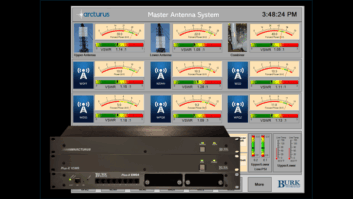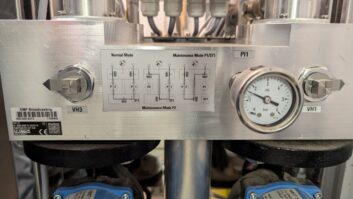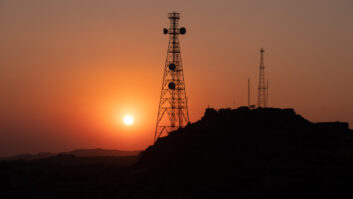WOOFFERTON, England — Nestled in the beautiful Shropshire countryside, just a few miles from England’s border with Wales, is the tiny village of Woofferton. That name is synonymous with shortwave radio for millions of listeners around the world as just a short distance from the village itself, lays the United Kingdom’s last remaining public service shortwave transmitting station.
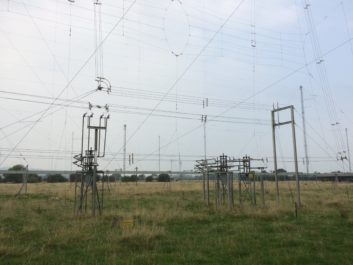
Now owned and operated by Encompass Digital Media, Woofferton recently celebrated its 75th birthday. Built in 1943, the station has a fascinating history; originally designed to bolster the BBC’s General Overseas Service (now the World Service) during the latter years of World War II, it was later partly funded by the United States and was used extensively by the Voice of America to broadcast into Eastern Europe and the former Soviet Union during the cold war years. Today, Woofferton transmits programs for the BBC and a number of other international broadcasters, reaching audiences across Europe, North Africa and the Middle East.
OPERATIONS
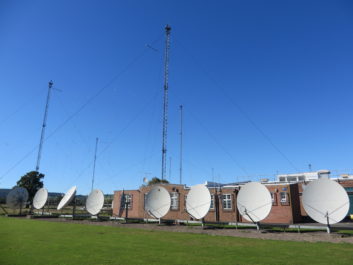
There are 10 high-power HF transmitters at Woofferton. They range from Marconi senders of various vintages, including two BD272 250 kW units that date back to the 1960s, to the more recent 300 kW B6124 solid-state transmitters, and four of the most modern RIZ 250K01 wideband systems, which are also capable of operating in Digital Radio Mondiale (DRM) mode. In fact, the BBC’s daily DRM transmission for Europe is broadcast from here.
Outside in the antenna field, there are 35 shortwave curtain arrays (aerials) supported by 25 masts. Most of the antennas can be operated in full or half-curtain mode, depending on the coverage required, and can be electronically steered (slewed) to beam transmissions in a variety of directions. This is done by varying the phase of the signal and feed points to the antenna, rather than by physical movement.
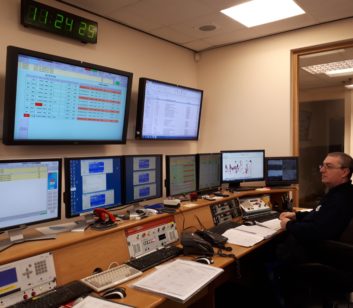
The Woofferton team numbers some 14 staff, comprising of broadcast engineers, maintenance technicians, mechanical and electrical engineers, riggers (antenna specialists) as well as providing an outpost for Encompass’ International Operations team. The station’s facilities and location make it an excellent logistical base for the testing, servicing and deployment of a wide range of satellite receivers and FM radio transmission systems which are installed at hundreds of BBC FM relays and partners around the world.
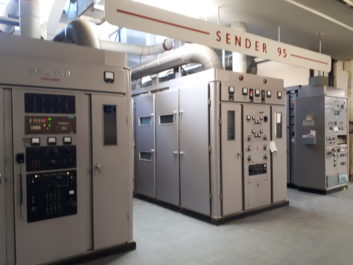
Woofferton has one of most modern and flexible transmission control systems in the world, allowing the entire facility to be remotely controlled and monitored by Encompass’ MCR in London, over 150 miles away. At around 5 p.m. each evening, the Woofferton engineers handover control to the nightshift in London and until 8 a.m. the next morning, the whole operation is fully automated.
MCR engineers in London can take control at any time however and remotely power up and tune the transmitters and then switch the output to any of the available antennas in just a few minutes. This capability is particularly useful if another transmitter fails and an alternative resource is required at very short notice. This flexibility means that scheduled broadcasts from other international sites, such as from Ascension Island, the Middle East and even Singapore, can be “covered” from Woofferton, minimizing the impact on listeners if a breakdown occurs.
MAINTENANCE
A shortwave transmitter station is a complex mix of engineering disciplines — from high-voltage electricity and radio frequency and traditional audio engineering, through to modern computer processors, which run the station’s automation and control systems.
Throughout a typical day, the duty engineers coordinate any changes to the transmission schedule, which may be required to allow maintenance and repairs to be carried out.
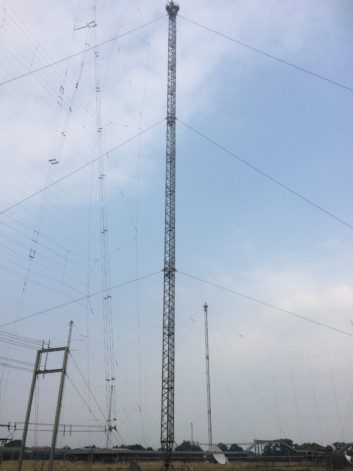
Ensuring the safety of staff working inside the transmitter enclosures and outside on the antennas is essential: a safety lock out system is used to isolate the equipment to be worked on, with unique physical “keys” and interlocks needed to make sure systems cannot be used or become live until the engineers and riggers are safely clear of high voltages and radiating elements.
Surprisingly maybe, the middle part of the day is one of the “quietest” periods at the site, as most transmissions take place during the early morning and evening, due to the time differences between the U.K. and audiences in Africa and the Middle East. This is therefore the ideal time to carry out routine maintenance to the transmitters, some of which are still going strong after 40 years of service thanks to the skills and expertise of the Woofferton engineers.
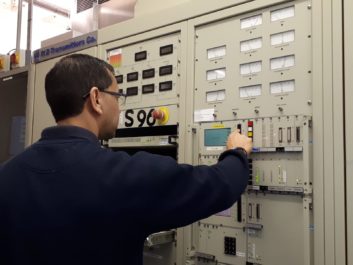
They need a carefully planned regime of regular checks and preventative work to keep them on the air, as well as some tender loving care — something which is in no short supply at Woofferton. A myriad of maintenance tasks are carried out, which include checking the RF, modulator and water cooling systems, and testing individual components such as resistors and capacitors, and of course the valves themselves.
Any faulty components will be replaced with spares from stores, or as is sometimes required when items are obsolete, manufactured on-site by the station’s workshop. The mechanical and electrical engineers can fabricate bespoke metalwork and fittings which are no longer available, as well as carry out maintenance to the stations “heavy” equipment such as HV transformers, fan units, gas compressors and pumps.
MISSION-CRITICAL ROLE
At around 3 p.m. GMT each day, the station comes alive as the evening transmissions for Africa and Middle East start to ramp up and by 6 p.m. almost every transmitter is on-air, broadcasting in languages such as Arabic, French, Hausa, Amharic, Kurdish, Dari, Pashto and Russian, as well as English.
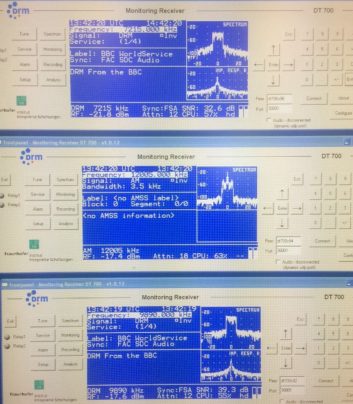
In recent years, Woofferton has also taken on a new role in being one of a few sites around the world where satellite carrier monitoring is carried out, to check and report on the performance of quality of satellite distribution of the BBC’s international TV and radio channels.
More than 75 years after its first broadcast to wartime occupied Europe, Woofferton continues to demonstrate the unique and enduring power of shortwave broadcasting — especially in parts of the world where media freedom and access to objective news is sometimes made deliberately difficult for international broadcasters to reach. And it’s still proud of its critical role in informing, entertaining and educating millions of listeners around the world.

